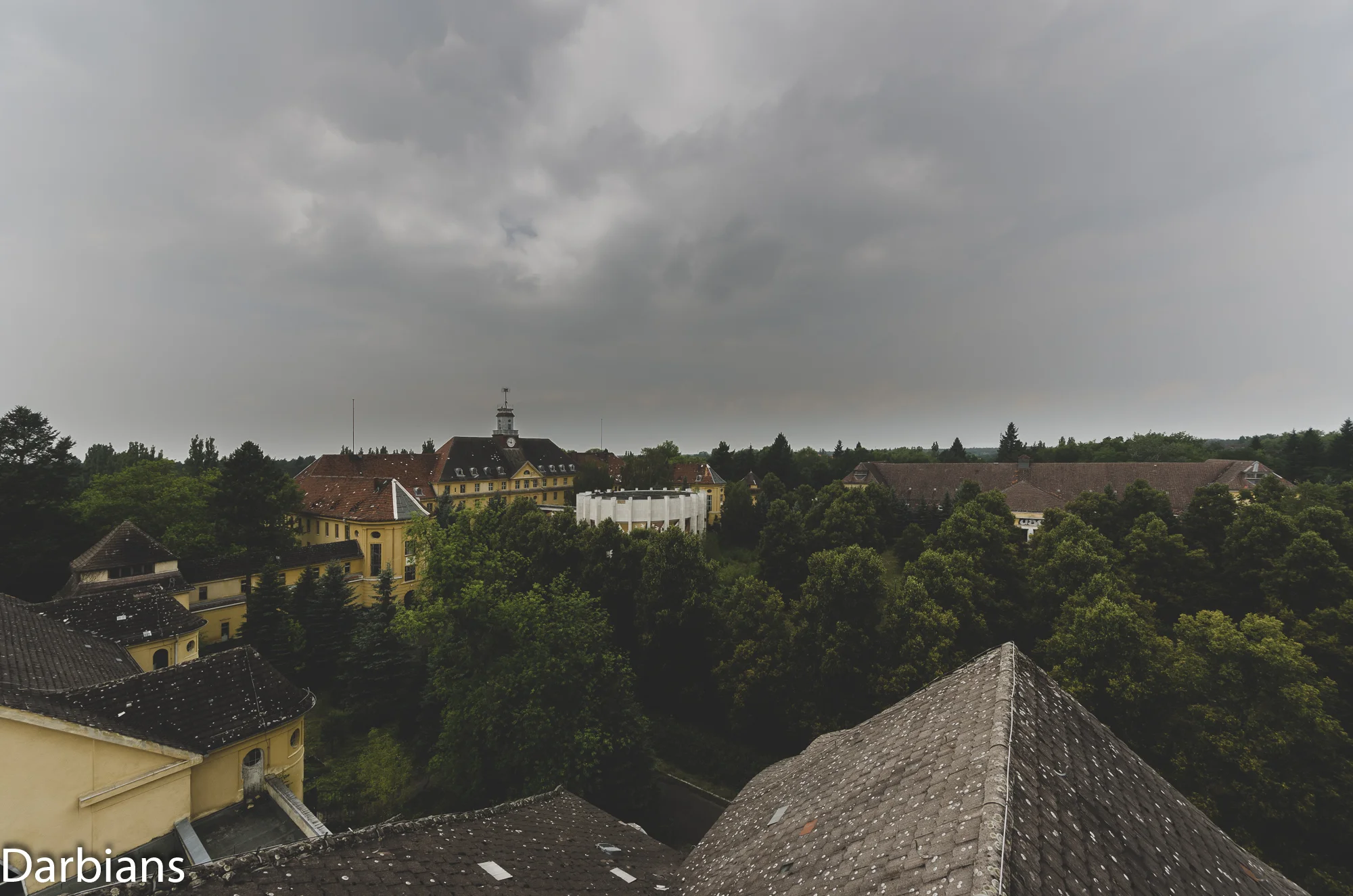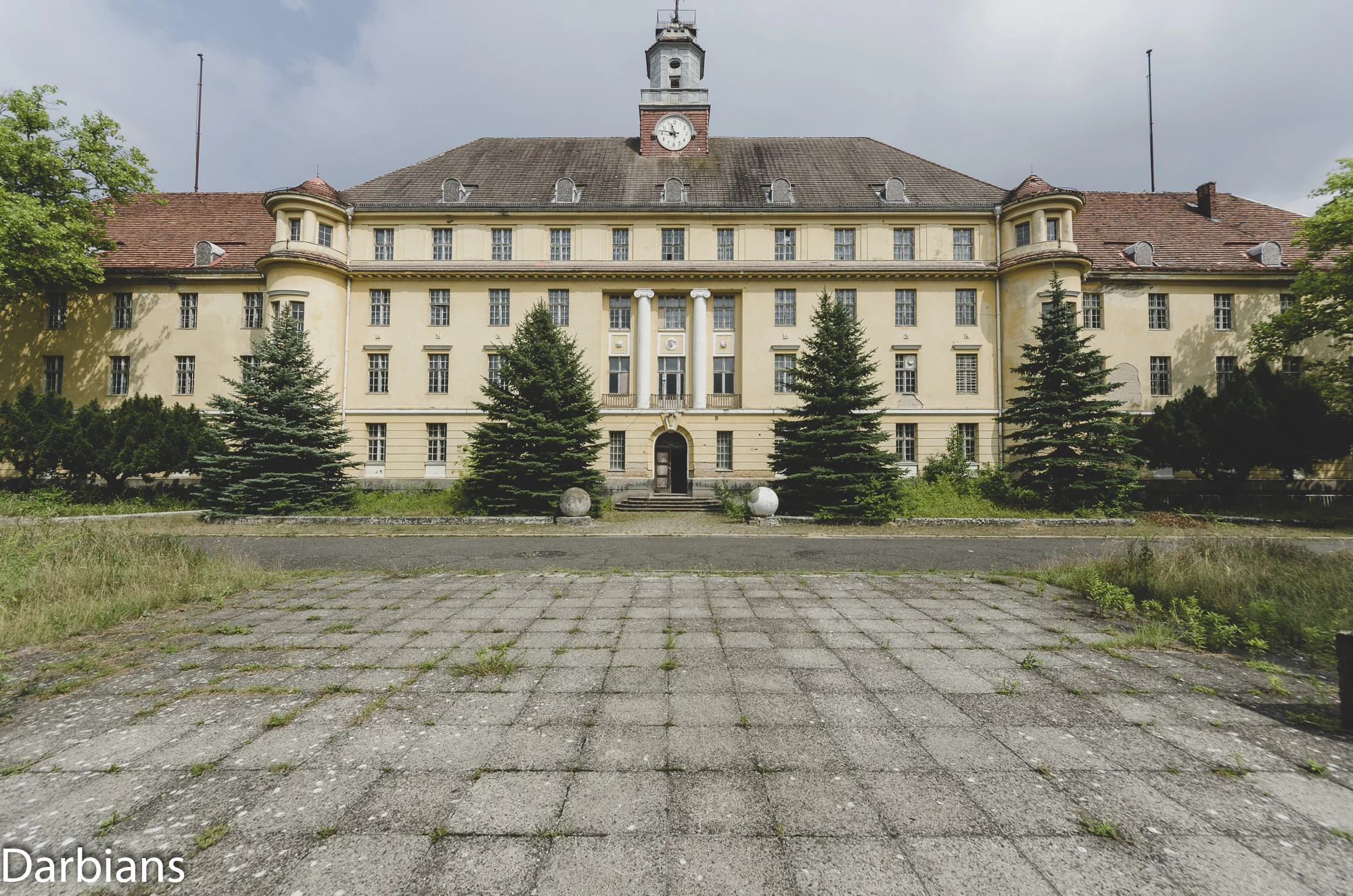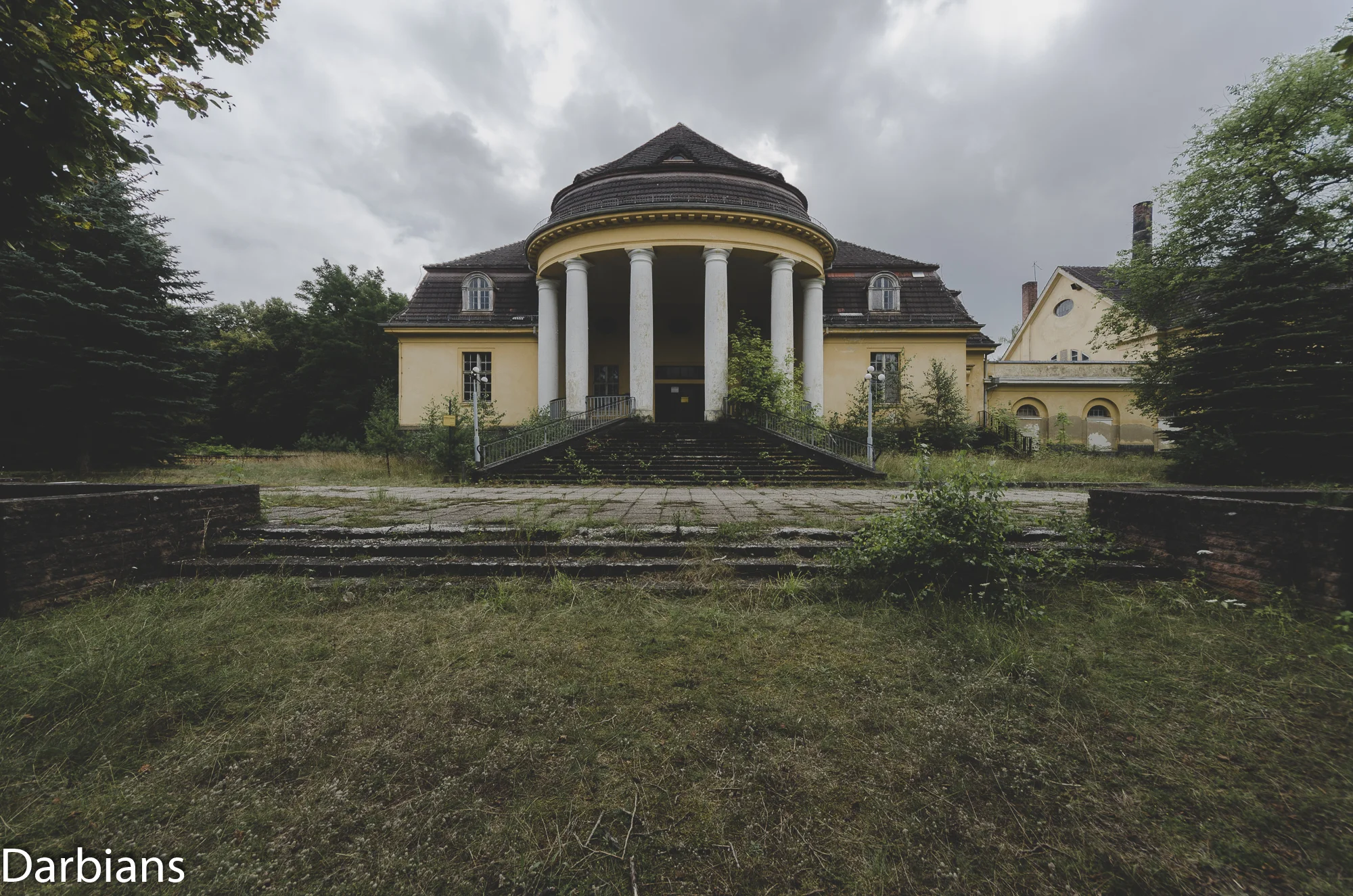Haus Der Offiziere. Taken from the top of the dining hall you can see all of the main site.
Haus Der Offiziere. Another view from above the dining hall facing the Kulturehaus.
Haus Der Offiziere. One more view from above the dining hall. Nature really has taken over the boiler house.
Haus Der Offiziere. We couldn’t gain access to this round building. It housed The Assault on Berlin diorama. The Kulturehaus is to the left, the Commanders house in the distance and the swimming pool to the right.
More in depth reports to key areas of Haus Der Offiziere in Wünsdorf







